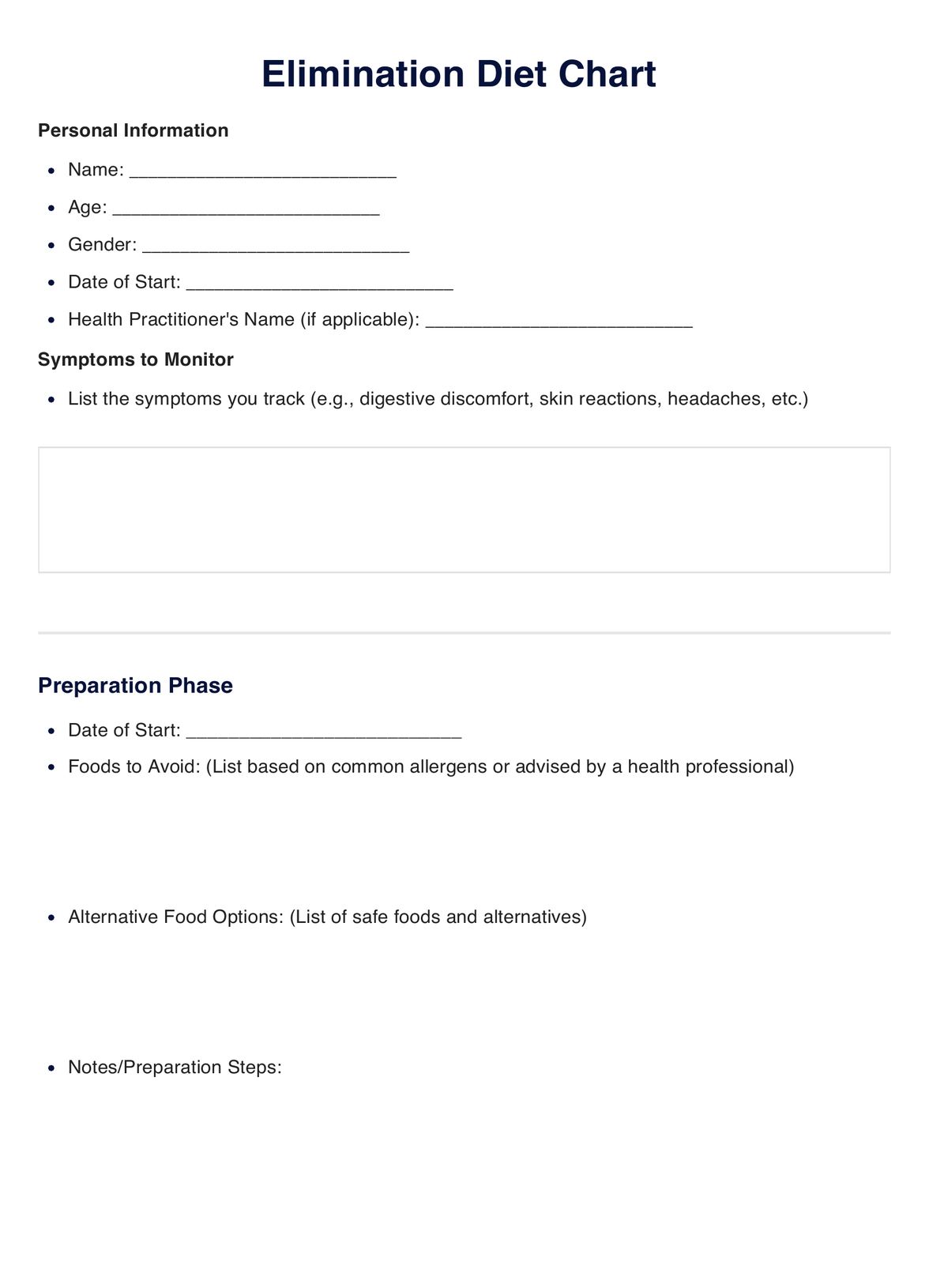Elimination Diet Charts are commonly requested by individuals experiencing symptoms like food sensitivities, allergies, or digestive issues. Healthcare providers such as dietitians, nutritionists, allergists, and general practitioners may also recommend them to patients who exhibit symptoms potentially linked to dietary factors. Additionally, they are used by individuals interested in identifying specific dietary triggers to improve overall health and well-being.

Elimination Diet Chart
Discover how to identify food sensitivities with our comprehensive Elimination Diet Chart. Includes a free PDF download and a detailed example to guide you.
Elimination Diet Chart Template
Commonly asked questions
Elimination Diet Charts are used systematically to identify potential food sensitivities, intolerances, or allergies. They guide users through removing potential allergens from their diet for a period, then carefully reintroducing these foods while monitoring for any reactions. The charts help record and analyze dietary intake, symptoms experienced, and reactions to the reintroduced foods, thereby providing valuable insights into which foods may be causing adverse health effects.
The duration of an elimination diet can vary depending on individual needs and the specific protocol followed, but it generally spans several weeks to a few months. Typically, the elimination phase lasts 2 to 4 weeks, followed by the reintroduction phase, where foods are gradually added back into the diet one at a time, with a few days between each to monitor for symptoms.
The total time also includes the preparation and evaluation phases, making it a thorough process.
EHR and practice management software
Get started for free
*No credit card required
Free
$0/usd
Unlimited clients
Telehealth
1GB of storage
Client portal text
Automated billing and online payments











